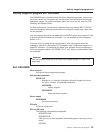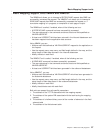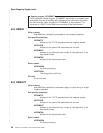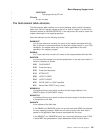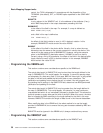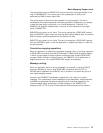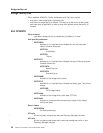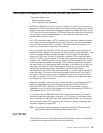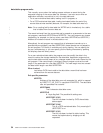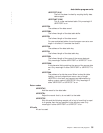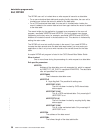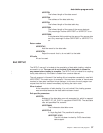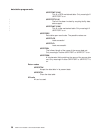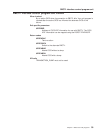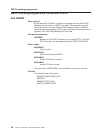
Data tables management exits XDTRD, XDTAD, and XDTLC
These exits apply to both:
v CICS shared data tables
v CICS coupling facility data tables.
XDTRD and XDTAD allow you to control the selection of records for inclusion in a
data table, XDTRD being used to make such selections during loading, and XDTAD
being invoked when records are subsequently added to a loaded data table (or to a
CFDT that did not require loading). XDTRD also allows the contents of records that
are included in a user-maintained table, or a coupling facility data table, to be
modified before they are added.
For CICS shared data tables, XDTLC enables you to take action based on the fact
that a data table has completed loading, which might be to end some restrictions
that you have decided to place on access to the data table during loading, or to
cater for an unsuccessful completion of the loading.
For a coupling facility data table, XDTLC allows your global user exit program to
decide whether to accept an unsuccessfully loaded coupling facility data table. If the
user exit program decides to accept the table, it remains open and available for
access, but CICS does not mark it as loading completed. This is also the default
action if no XDTLC exit is enabled. This means that application programs continue
to receive the LOADING condition for any records that are beyond the key range of
records successfully loaded into the table. This ensures that application programs
are aware that not all the expected data is available. It also allows you to retry the
load, when the cause of the failure has been corrected, by closing the file that
initiated the load and reopening it. Alternatively, you could open another
load-capable file that refers to the same data table. If your exit program decides to
reject the table, it is closed and the records already loaded remain in the table. If
the cause of the failure is corrected, a subsequent open for the data table allows
the load to complete. XDTLC is not invoked for a coupling facility data table that is
not loaded from a source data set.
Note that a program invoked from any of these exit points must declare a DSECT
defining the data tables user exit parameter list pointed to by field UEPDTPL.
(Although UEPDTPL is defined by a DFHUEXIT call, the parameter list that it
addresses is not.) To do this, your program can include the copybook DFHXDTDS,
which defines the DT_UE_PLIST DSECT.
If any tables specify OPENTIME=STARTUP or are opened implicitly, you should
provide a program list table post-initialization (PLTPI) program to activate the user
exits. Otherwise, the data table may start loading before the exits can be enabled.
For more details about PLTPI programs, see “Chapter 4. Writing initialization and
shutdown programs” on page 393.
Note: For additional information about using these exits with CICS shared data
table support, see the
CICS Shared Data Tables Guide
.
Exit XDTRD
The XDTRD user exit is invoked just before CICS attempts to add to the data table
a record that has been retrieved from the source data set.
data tables program exits
Chapter 1. Global user exit programs 33
|
|
|
|
|
|
|
|
|
|
|
|
|
|
|
|
|
|
|



